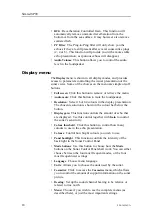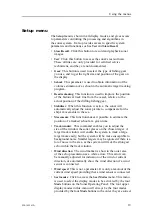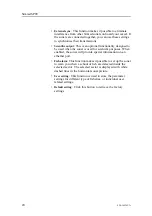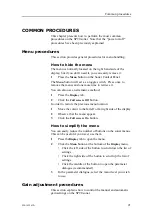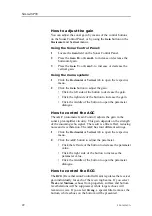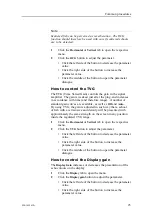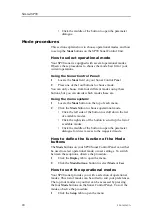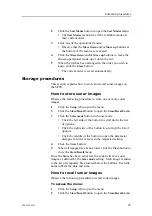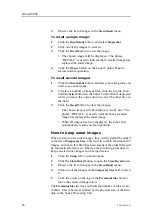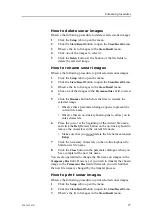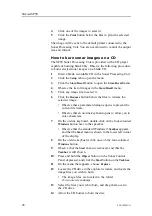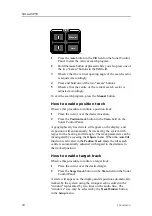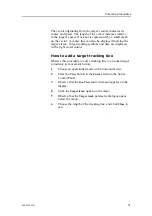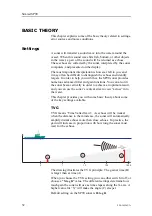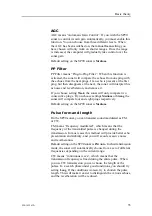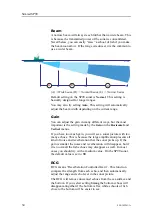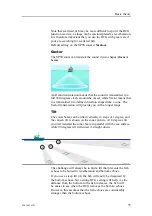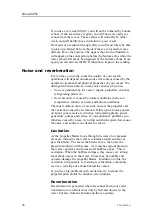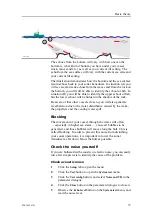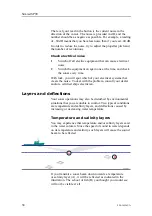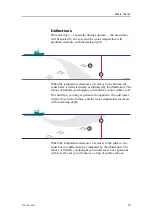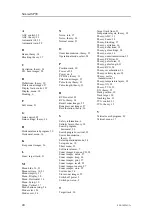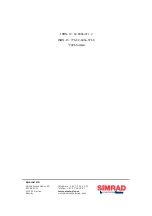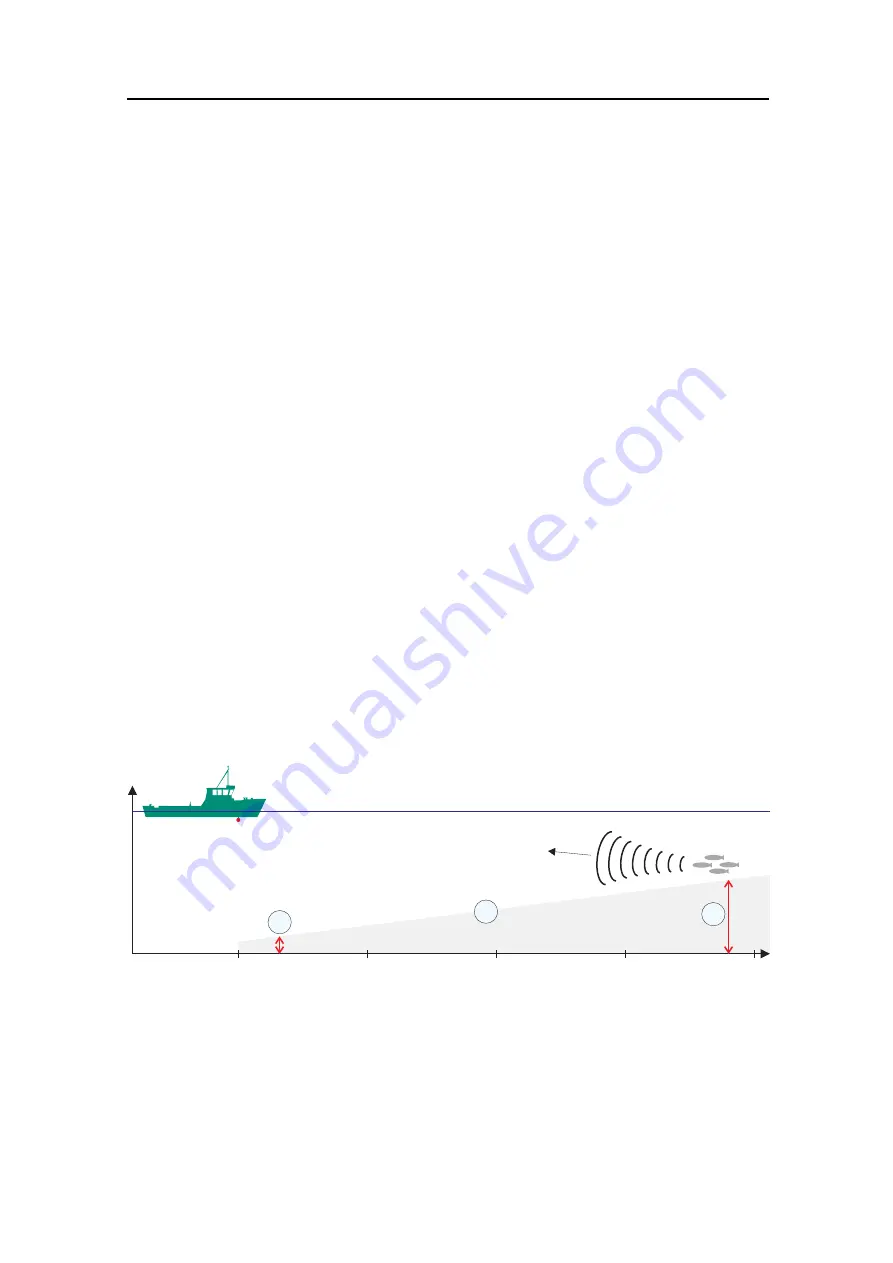
Simrad SP90
BASIC THEORY
This chapter explains some of the basic theory related to settings,
error sources and noise conditions.
Settings
A sonar will transmit a sound wave into the water around the
vessel. When this sound wave hits fish, bottom, or other objects
in the water, a part of the sound will be returned as echoes.
These echoes are collected by the sonar, interpreted by the sonar
computers, and presented on the display.
The most important interpretation is however left to you, and
it may often be difficult to distinguish the echoes and identify
targets. In order to help you with this, the SP90 sonar provides
numerous advanced filter and gain functions. You can also tilt
the sonar beam vertically in order to achieve an optimum result,
and you can use the sonar’s vertical slice to view “across” into
the water.
This chapter provides you with some basic theory about some
of the key settings available.
TVG
TVG means “Time Varied Gain”. As echoes will be weaker
when the distance to them increase, the sonar will automatically
amplify distant echoes more than close echoes. In practice, the
gain will increase in proportion with how long the sonar must
wait for the echoes.
A
(CD015005C)
0
1
10
100
1000
C
B
The drawing illustrates the TVG principle: The gain at time (B)
is larger than at time (A).
When you choose the TVG setting you can either switch it off, or
choose a
“X log R”
value. The different settings determine how
much gain the sonar will use as time elapses along the X-axis. A
higher value for “X” will make the angle (C) steeper.
Default setting on the SP90 sonar is
20 log R
.
32
850-165261/A
Summary of Contents for Simrad SP90 Series
Page 2: ......
Page 43: ...Index 850 165261 A 41 ...

